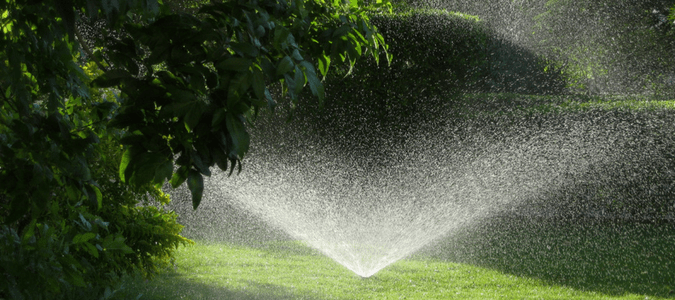
Let’s see if this sounds familiar: You buy a new barbecue to enjoy grilling out while the weather is nice and warm. You plan your menu. Get all the fixings. But when you head out back to get started, you barely recognize your yard. There are just as many patches of weeds as there are brown spots and you can’t walk more than a few feet without stepping on an anthill.
What happened? There are many reasons our lawns can look a little worse for the wear during the summer months. Luckily, we have a few suggestions on how to keep your outdoor spaces looking great, even during the hottest months of the year.
Summer Lawn Care Tips
Summers in southern states can be brutal for lawns. Temperatures frequently reach triple digits. Rain may come infrequently – if at all– and insects and weeds are out in full force. If you’re not paying attention, your lawn can spin out of control before you know it.
Start Early
Typically, the problems you notice with your lawn started a month or more prior to you noticing. The best way to solve them? Prevent them from happening in the first place.
That means doing all the right things for your lawn in the spring, like raking out dry lawns before mowing, sharpening your lawn mower blades and using pre-emergent weed control.
Know Your Grass
Living in the south means you likely have a warm-weather grass, such as Bermuda, Zoysia or St. Augustine.
Warm weather grass types have similarities—such as a tendency to thrive when temperatures climb—but there are also differences. For example, Bermuda does best at a length of one to two inches. Zoysia, in contrast, thrives when it reaches two to three inches high. Understanding the type of grass can save you a lot of time and costly mistakes.
Longer is (Generally) Better
In general, you want to mow your lawn less frequently during the summer months than during other times of the year. Why? There are a couple of reasons:
- Grass grows faster in the summer and you should only cut less than a third of the blade off at a time so you don’t halt new plant growth. Keeping it short would also mean much more frequent mowing.
- Taller grass comes with many benefits. The roots go deeper and it’s more tolerant of drought-like conditions. The extra shade it provides can even prevent weed seeds from germinating.
Although you should mow less often during the summer, don’t let your grass grow too long, since excess vegetation will provide outdoor pests with more places to hide. If you plan to do a lot of traveling over the summer months, it may be wise to outsource your mowing to a lawn care company to make sure it gets done.
Water in the Morning
You probably already know you want to water your grass when the sun isn’t blazing in the sky. If you do, the water will evaporate before your grass can soak it up. But it’s a bit more complicated than that.
If you water in the evening, your grass is likely to stay wet overnight. This is something that can cause your lawn to get diseases. So, what’s the best lawn watering schedule?
Watering in the morning is better. Morning watering gives your grass enough time to drink but still allows the sun to dry up excess moisture before it becomes a problem. How you water is just as important as when you water. Every week, warm weather grasses need about one to two inches of water. How should you get them to this amount? By scheduling your sprinklers to water deeply once or twice a week. This schedule also conforms to watering restrictions already in place in parts of the country that experience drought.
A nice, deep soak a few times a week causes the water to go deeper into the soil—up to six to 8 inches under optimal conditions. This, in turn, causes roots to dig in more, making your grass more drought-tolerant.
Wet it, Then Mow it
One common problem southern lawns face in the summer months is a lack of moisture. Combine the scorching hot sun with little-to-no rain and it’s a constant struggle.
Because of this issue, you should take care when mowing. If you cut dry grass, it can further stress out your lawn. Instead, make sure that you water prior to mowing. The best way to do this is to schedule the two activities together – water in the morning, then mow later that day.
Take a Fertilizing Vacation
When people see a scruffy, patchy lawn, their first instinct is often to fertilize it. This instinct makes sense, but in the heat of a southern summer, it’s the wrong one. Fertilizing in hot weather can create tender new growth that’s likely to struggle in the heat. Worse, it can burn your lawn. For the best results, you should stop using fertilizer about a month before your area’s summer temperatures arrive.
Call a Professional
Don’t have the greenest thumb? Prefer to spend your time doing other things? Let the experienced professionals at ABC Home & Commercial Services to keep your lawn looking its best. Whether it’s taking over your mowing, cleaning up your yard by edging or trimming, adding to your existing landscaping or converting your landscape to more drought-tolerant species, ABC can help you maintain your curb appeal even during the hot months of summer.
